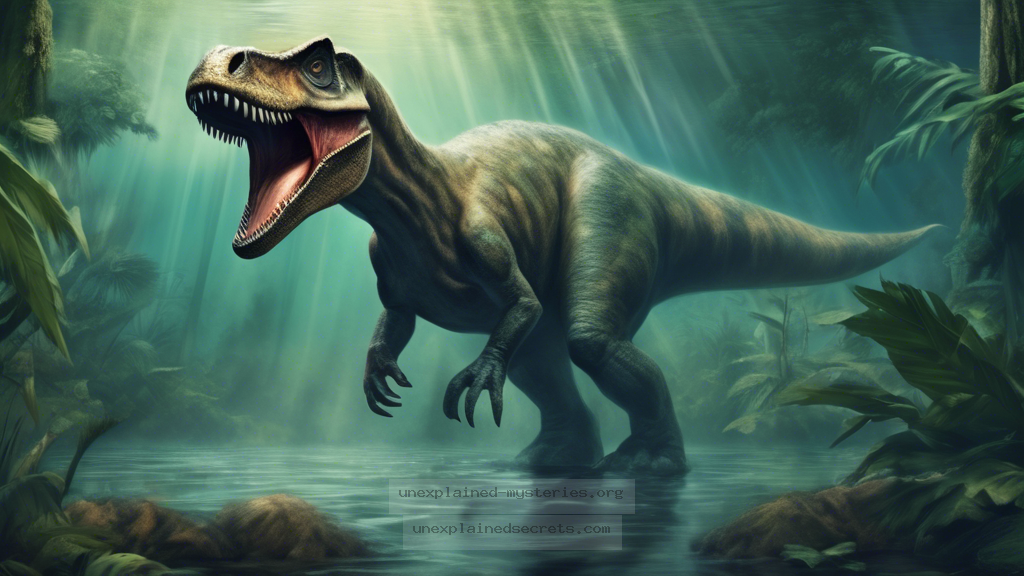What Happened to the Mokele-Mbembe: The Dinosaur of the Congo?
What Happened to the Mokele-Mbembe: The Dinosaur of the Congo?
The legend of the Mokele-Mbembe, often described as a modern-day dinosaur residing in the rivers of the Congo Basin, has captivated cryptozoologists and enthusiasts for decades. This question matters not just for the sake of curiosity about mysterious creatures, but also because it highlights the challenges of exploration, the intersection of folklore and science, and the ongoing quest to uncover the unknown in our world. The story of Mokele-Mbembe raises more questions than answers, prompting deeper investigation into its origins, sightings, and the implications of its existence.
The Historical Context of Mokele-Mbembe
The Mokele-Mbembe is deeply rooted in the folklore of several African tribes, particularly the Bacongo and the Pygmies, who describe it as a large, herbivorous creature resembling a sauropod dinosaur. The creature reportedly inhabits the Congo River and its tributaries, where it is said to disrupt local fishing activities. The name “Mokele-Mbembe” translates roughly to “one who stops the flow of rivers,” a fitting description considering the creature’s purported size and behavior.
Historical accounts of Mokele-Mbembe date back to the early 20th century when Western explorers began to report local legends. In 1909, the American explorer and journalist William H. Sheppard documented the creature based on tales from local tribes, noting its resemblance to a brontosaurus. Over the years, various expeditions have sought to find this elusive creature, further solidifying its place in cryptozoological lore.
Core Concepts: What is Mokele-Mbembe?
Descriptions of Mokele-Mbembe vary, but common characteristics include:
- Large, dinosaur-like body, often compared to that of a brontosaurus.
- Long neck and tail, with a massive, barrel-like torso.
- Reportedly herbivorous, feeding on aquatic vegetation.
- Capable of creating significant disturbances in the water.
Many researchers speculate that Mokele-Mbembe could be a surviving member of the dinosaur lineage, specifically a sauropod, which would imply that some species might have evaded extinction. However, this notion straddles the line between fascination and skepticism, as the scientific community often requires concrete evidence to validate such claims.
Practical Evidence: Sightings and Investigations
Numerous expeditions have been conducted in search of Mokele-Mbembe, each yielding various degrees of anecdotal evidence but little in the way of conclusive proof. Notable expeditions include:
- Dr. Roy P. Mackal’s 1980 Expedition: Mackal, a biologist, led an expedition to the Congo River basin and reported interviews with local witnesses. His team found unexplained footprints believed to belong to Mokele-Mbembe but did not capture any definitive evidence.
- 1992 Expedition by the Animal Planet Team: This expedition featured a documentary that aimed to capture footage of the creature. Although they reported a number of sightings, they ultimately returned without conclusive evidence.
- 2018 Expedition: A recent venture involving a team of researchers and cryptozoologists utilized drones and sonar technology to explore the depths of the Congo River, searching for undiscovered species, including Mokele-Mbembe.
Each expedition has contributed to the growing mythology surrounding Mokele-Mbembe, yet none have produced irrefutable physical evidence. This absence of tangible proof raises questions about the validity of the creature’s existence.
Alternative Perspectives on Mokele-Mbembe
While many remain hopeful about the existence of Mokele-Mbembe, alternative perspectives offer skepticism. Some researchers argue that the creature’s legend may be a cultural construct, symbolic of the mysteries of the jungle rather than a reflection of reality. Others suggest that the sightings could be misidentifications of known animals, such as hippos or crocodiles, which can create disturbances in the water and might be mistaken for a larger creature.
Additionally, some scientists posit that if a large dinosaur-like creature were to exist in the Congo, it would likely not survive due to environmental changes, poaching, and habitat loss. Furthermore, the remoteness of the Congo Basin presents significant challenges for researchers attempting to study the area scientifically.
Common Misconceptions and Clarifications
Misconception: Mokele-Mbembe is a confirmed dinosaur.
Clarification: There is no scientific consensus affirming that Mokele-Mbembe is a dinosaur. Most evidence remains anecdotal, and no physical specimens have been documented.
Misconception: All sightings are hoaxes or misidentifications.
Clarification: While many sightings may be misidentified, the consistent nature of reports from different witnesses suggests that something intriguing is occurring in the Congo.
Best Practices for Investigating Cryptozoological Claims
For those interested in pursuing research into cryptids like Mokele-Mbembe, adhering to best practices can enhance the credibility of investigations:
- Gather Witness Testimonies: Conduct interviews with individuals who claim to have seen the creature, documenting their accounts carefully.
- Utilize Technology: Employ modern technology such as drones, cameras, and sonar equipment to aid in search efforts.
- Collaborate with Locals: Build trust with local communities to gain insights into their experiences and the cultural significance of the creature.
- Remain Skeptical: Approach the investigation with a balanced mindset, recognizing the difference between anecdotal evidence and scientific proof.
Future Developments and Ongoing Research
As cryptozoology continues to evolve, the quest for Mokele-Mbembe remains ongoing. Advancements in technology, including improved imaging techniques and environmental DNA sampling, may provide new avenues for exploration. Researchers are now focusing on gathering more substantial ecological data from the Congo Basin, which could yield insights into undiscovered species.
Moreover, the conversation surrounding Mokele-Mbembe has broader implications for biodiversity and conservation efforts. The interest in this cryptid often draws attention to the environmental challenges facing the Congo and the need for conservation initiatives to protect its unique ecosystems.
Conclusion: The Allure of Mystery in Cryptozoology
The mystery of Mokele-Mbembe is emblematic of the broader allure of cryptozoology, where folklore, science, and the unknown intersect. While the evidence for the creature remains inconclusive, its legend continues to inspire exploration and curiosity about the natural world. Whether Mokele-Mbembe is a remnant of a prehistoric age or merely a product of cultural mythology, the ongoing fascination with this creature reminds us of humanity’s enduring quest to understand and explore the mysteries that lie beyond our current knowledge.
As we move forward, the stories of Mokele-Mbembe will persist, urging us to remain open to the possibilities that the world still has to offer. Whether we ultimately find evidence of this cryptid or not, the journey of exploration and the pursuit of knowledge is what truly fuels our imagination and curiosity. 🌍
Other Articles
Recent Posts
- What Happened to Flight MH370? The Conspiracy Theories That Still Haunt Us
- What Secrets Lurk Within the Walls of the Infamous Trans-Allegheny Lunatic Asylum?
- What Evidence Supports the Existence of Bigfoot in the Pacific Northwest?
- What Happened to the Indus Valley Civilization? Unraveling the Mysteries of Ancient Urban Life
- Can Telepathy Be Scientifically Proven Through Laboratory Evidence?







